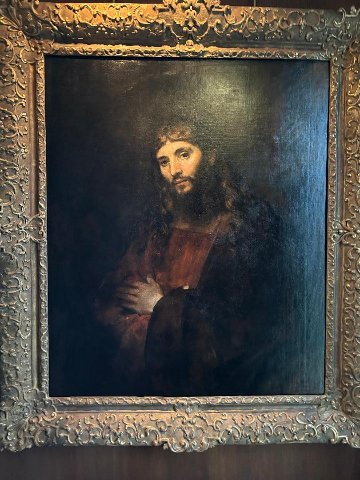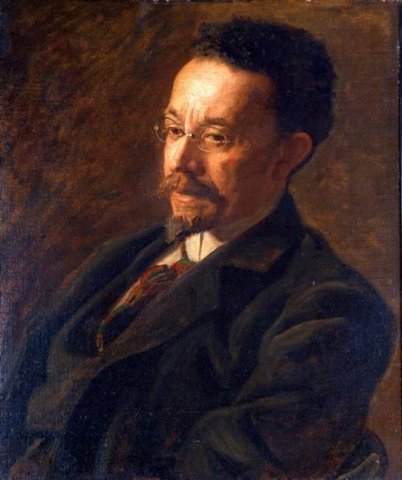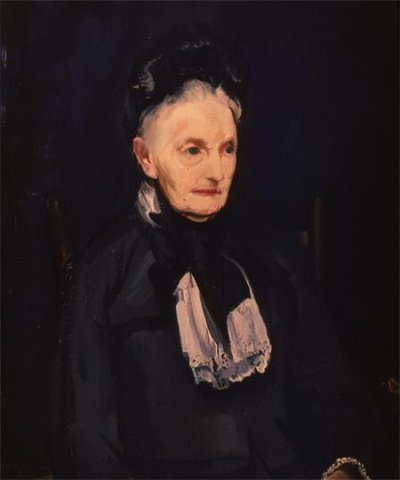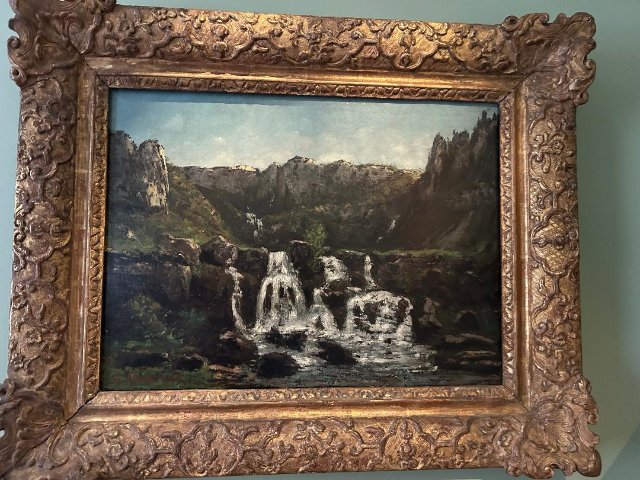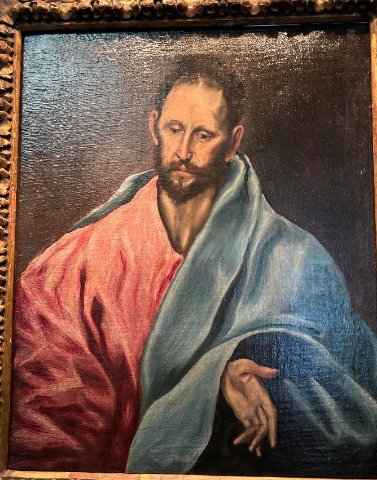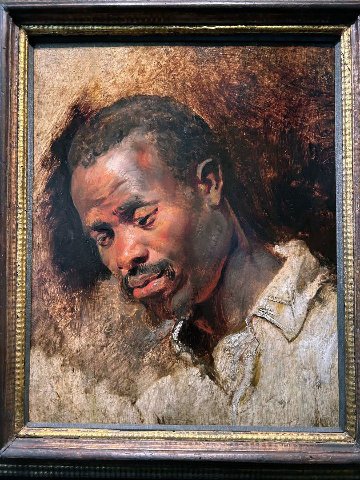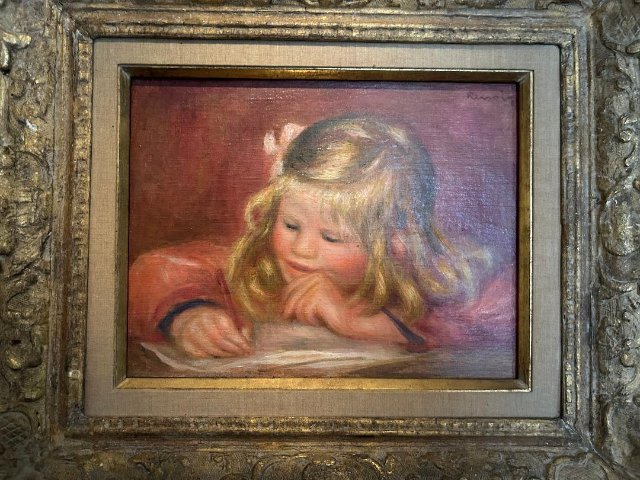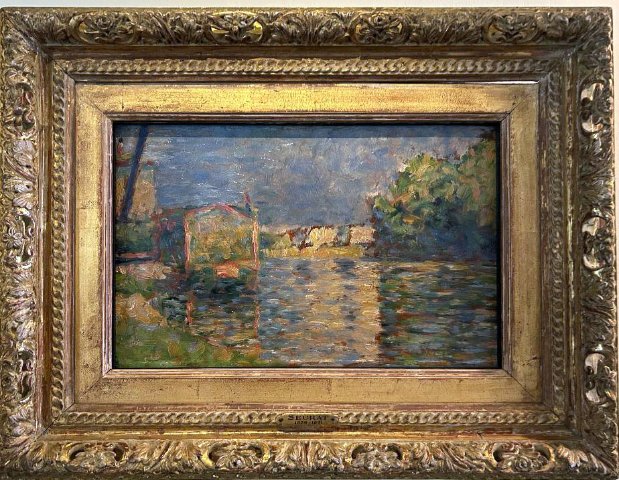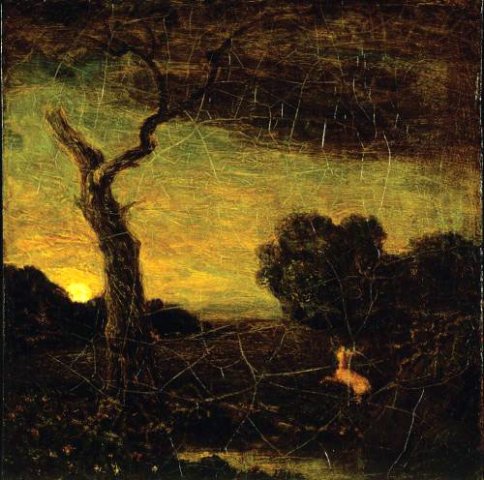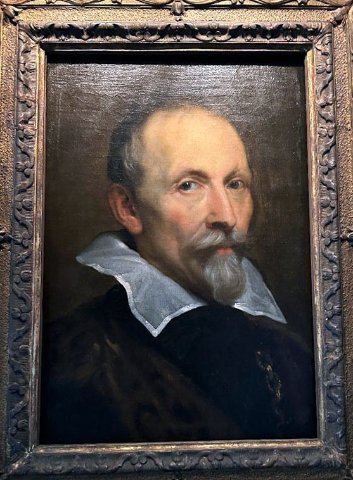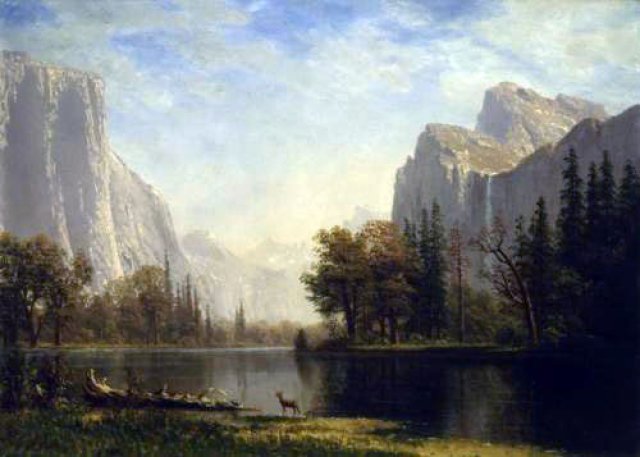Hyde Museum in Glens Falls
A Hidden Gem of Old Masters
By: Charles Giuliano - May 13, 2024
Tucked away in Glens Falls, New York is the small but magnificent Hyde Museum. In a rural industrial setting it is astonishing to encounter a collection of Old Masters and modern works that run the gamut from Rembrandt to Picasso and beyond.
They represent a check list of collectors Louis (1866–1934) and Charlotte Hyde (1867–1963). Married in 1901 they were well advised, worked with New York and European dealers, and had deep pockets to cherry-pick the best that was available in their price range.
Like Old Master collectors of their era they coveted a Rembrandt. One fell into their lap, so to speak, as a result of revolution and serendipity. To fund a five year plan, launched in 1928 by Joseph Stalin who never was known for cultural taste and sensitivity, he opted to sell works in museums and collections confiscated from aristocrats.
This had the impact of flooding the market and reducing prices for masterpieces. The Hydes visited Berlin in the 1930s to purchase a late Rembrandt, “Christ with Folded Arms” (ca. 1657-1661). The dark, melancholy painting (which could use cleaning) was acquired for a song at just $33,000 which was then, arguably, a lot of money. Today biding would start perhaps at $100 million.
In 1961 the Metropolitan Museum of Art made headlines when it purchased Rembrandt’s “Aristotle Contemplating the Bust of Homer,” 1653, for $ 2.3 million.
Displayed with furniture in a room of the former Hyde home, other than for its scale, the picture does not really call attention to itself. But it’s a bit astonishing to find a major Rembrandt in the Adirondacks.
It underscores that the Hydes had both money and taste. Her father, Samuel Pruyn (of Dutch ancestry, pronounced “Prine”), co-founded Finch, Pruyn & Company, Inc. in 1865. He soon became the sole owner of the paper manufacturer, and established the family’s wealth.
That sets up what could have been a novel by Theodore Dreiser. One cannot imagine the misery of growing up an heiress in the boondocks. Pity the poor little rich girl with nothing to spend it on; all dressed up with nowhere to go.
Driving to Glens Falls we passed through a number of mills sited next to rivers. There was a similarity of now abandoned, derelict, commercial and residential property of once thriving communities. Each of these industrial clusters had their mansions which are now in varying stages of rehabilitation and repurposing.
After a local education, Charlotte, the oldest of three girls, was packed off to “finishing school” in Boston. I wonder in just what manner these maidens were “finished.” One aspect of that is developing manners, refinement, and taste for the arts as assets for a suitable marriage.
When they dated young Louis was a student at Harvard Law School. For a time he practiced but, in1906, was persuaded by his father-in-law to become vice president of the paper business. That must have been a difficult decision sacrificing a profession and independence for the small beer life of running the mill in Glens Falls.
Consequently, the couple had resources to build a fine home, an ersatz Italianate, stuccoed villa, behind which one sees the mill. He could walk to work. They enjoyed luxurious vacations exploring the arts and culture of Europe. Her two sisters each built next-door with similar but less ambitious homes. Boston architect Henry Forbes Bigelow was commissioned to design all three residences.
The Hydes had good eyes for objects and were well advised. The permanent collection consists of more than 5,000 objects, comprising paintings, works on paper, sculpture, and decorative arts, including furniture and textiles. They acquired Old Master paintings and drawings by such artists as Sandro Botticelli, El Greco, Rembrandt, Peter Paul Rubens, Anthony van Dyck, and Giovanni Battista Tiepolo. Scholars Bernard Berenson, William R. Valentiner and R. Langton Douglas advised them. They also acquired works by American artists including Albert Bierstadt, Thomas Eakins, Childe Hassam, Winslow Homer, John Frederick Peto, Albert Pinkham Ryder, Elihu Vedder, Frederick Carl Frieseke, and James McNeill Whistler.
To furnish the mansion built in 1912, they acquired sixteenth-century Renaissance tapestries and furniture, as well as late-eighteenth-century Neoclassical French seating furniture and marquetry desks. The paintings and vintage furnishings are displayed in their former living quarters.
After the death of her husband in 1934, Charlotte Hyde continued to acquire new works of art, approximately two-thirds of the collection. She broadened its scope acquiring works by such modern masters as Paul Cézanne, Edgar Degas, Pablo Picasso, Pierre-Auguste Renoir, Georges Seurat, and Vincent van Gogh. Mrs. Hyde died in 1963, at which time The Hyde Collection opened to the public permanently.
The collection continues to grow with works by late nineteenth- and twentieth-century American and European artists. The eclectic collection includes works by Gregory Amenoff, Harry Bartnick, George Bellows, Carmen Cicero, Stuart Davis, Dorothy Dehner, Arthur Dove, Lyonel Feininger, Adolph Gottlieb, Philip Guston, Keith Haring, Barbara Hepworth, Edward Hopper, Bud Hopkins, Wassily Kandinsky, Yasuo Kuniyoshi, John Marin, Diego Rivera, David Smith, Myron Stout, and Max Weber. With the gift of the Feibes and Schmitt Collection in 2016, The Hyde gained an additional 160 works including Josef Albers, Jean Arp, William Bailey, Grace Hartigan, Ellsworth Kelly, Franz Kline, Sol LeWitt, Man Ray, Robert Motherwell, Louise Nevelson, Robert Rauschenberg, George Rickey, Bridget Riley, Frank Stella, and Andy Warhol, among others.
When touring the intimate collection in period rooms there are many aha moments. One of the first such encounters was a small portrait head “Jan Wolverius,” ca. 1634, by Sir Anthony van Dyck. There is soft lighting, an alert expression and delicate texture to his whiskers.
Works by Peter Paul Rubens (1577-1640) were much prized and factor into many American collections. The Hydes acquired two stunning small heads, one of a man in armor (ca. 1615) and the more interesting one (ca. 1620) of a “moor.” They display the brilliant brushwork of one of the most prized masters of his generation.
There are three works by Jean-Auguste-Dominique Ingres, “Study for a Head of Victory,” “Study for the Odyssey” and the more important “Paolo and Francesca” (1855-60). In a maidenly manner she shrinks from his aggressive embrace.
Like all collections of their era there are some interesting misfires. The El Greco “James the Lesser” is inferior and the pathetic Picasso “Boy Holding a Vase,” 1905, is little more than an autograph. He might just as well have signed a napkin in a restaurant. The “Portrait of the Doge Petrus Lando” is attractive but vaguely in the Venetian manner of Tintoretto. The ersatz “Raphael” is a handsome, robustly painted portrait of a young man. A small Courbet “Waterfall Near Ornans” is muddy and bituminous with enervating impact.
There were, however, surprising pictures that knocked my socks off. At the bottom of a staircase, tucked away, what looked like an Eakins, actually was. Indeed a stunner, is his portrait of the African American artist and former student Henry Osawa Tanner ca. 1897. The insightful work would be the pride of any collection but here it is easily overlooked. Although encountering racism in America Tanner had great success in France.
We were equally astonished by a rare encounter with “Stag in the Forest of Arden” (ca. 1897) by Albert Pinkham Ryder. The small, dark, cracked painting is in terrible shape which attests to its authenticity. The eccentric visionary defied all the conventional rules and techniques for painting. Fewer than 300 works have survived and there are more than a thousand fakes. That made this encounter/ discovery all the more rare and wonderful.
Nonchalantly displayed was a lively, crisp, Winslow Homer sporting watercolor, “Good One Adirondacks.” No doubt this fishing scene was created not that far from its current home.
It is always a delight to find works by the Japanese/ American artist, Yasuo Kuniyoshi (1889- 1953) who was much admired during his career but later became neglected. Works like his small head of a man pop up as shards of the broken vase of period taste. For me, this interesting artist has never gone out of style.
Georges Pierre Seurat (1859-1891) worked slowly and died young. His small sketch “Banks of the Seine near Courbevoie” (ca. 1883) is an interesting snapshot and modest footnote to a stunning collection.
The addition to the original mansion has special exhibition galleries. During our visit there was one with period furniture and another with works by the Jamaican artist Paul Anthony Smith: Passage, through June 2. Richard Estes: Urban Landscapes will be on view May 31 to September 15.
Like many global museums, from June 22 – September 15, the Hyde will feature A Long Affair: Surrealism 1924 to Now. It commemorates the hundred-year anniversary of André Breton’s Manifesto of Surrealism. According to the manifesto, Surrealism induced “the marvelous”—a feeling of pleasurable disorientation brought about by creative devotion to dreams, the imagination, and the deeply psychological.
The exhibition incorporates artists who may not have been in the orbit of Breton but reflect his influence. On view will be paintings, drawings, prints, and three-dimensional objects from every decade since the 1920s.
The exhibition includes Jean Arp, Pennie Brantley, Leonora Carrington, George Condo, Salvador Dalí, Julio de Diego, Dorothy Dehner, Max Ernst, Karl Fortess, Philip Guston, Wifredo Lam, Georges Malkine, Man Ray, Joan Miró, Wangechi Mutu, Richard Pousette-Dart, Nathaniel Mary Quinn, Kay Sage, Atillio Salemme, Kurt Seligmann, Yves Tanguy, and others.
In addition to its astonishing permanent collection that’s another good reason to take a summer ride in the Adirondacks.


